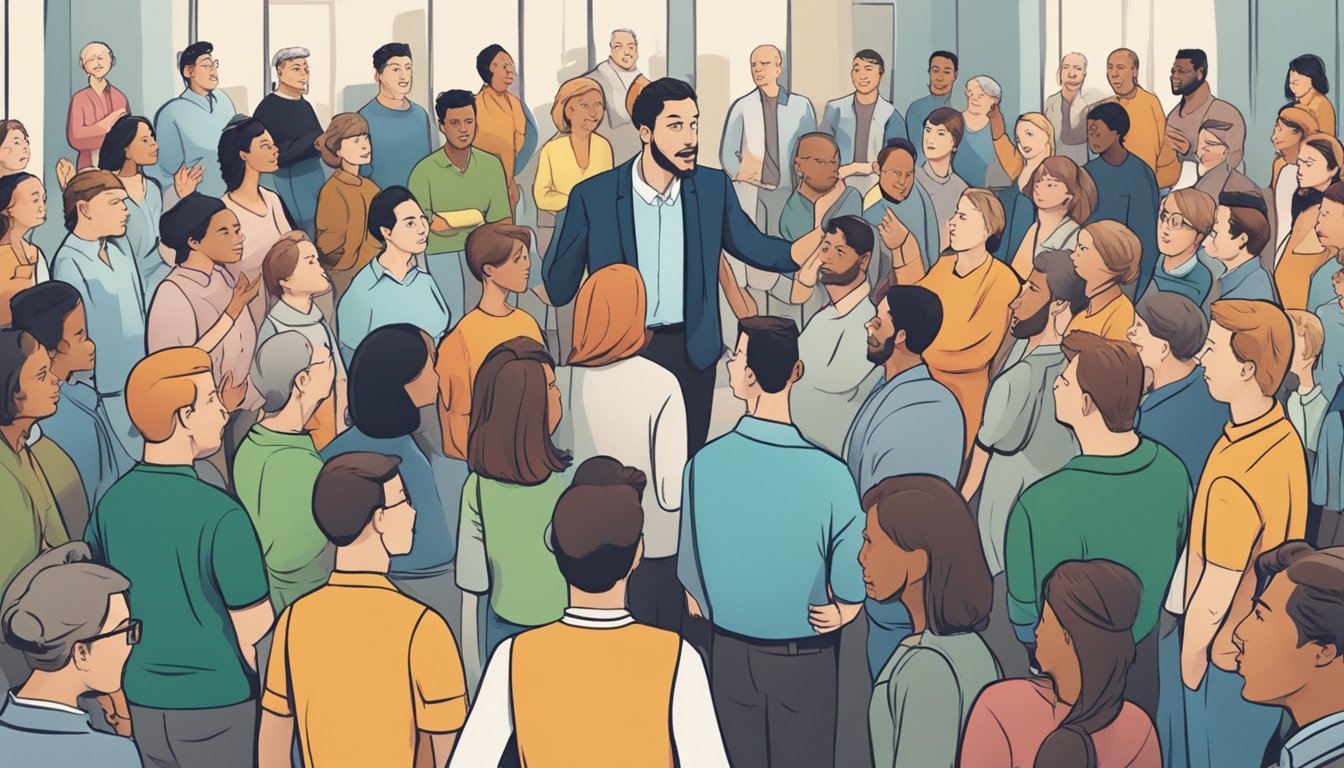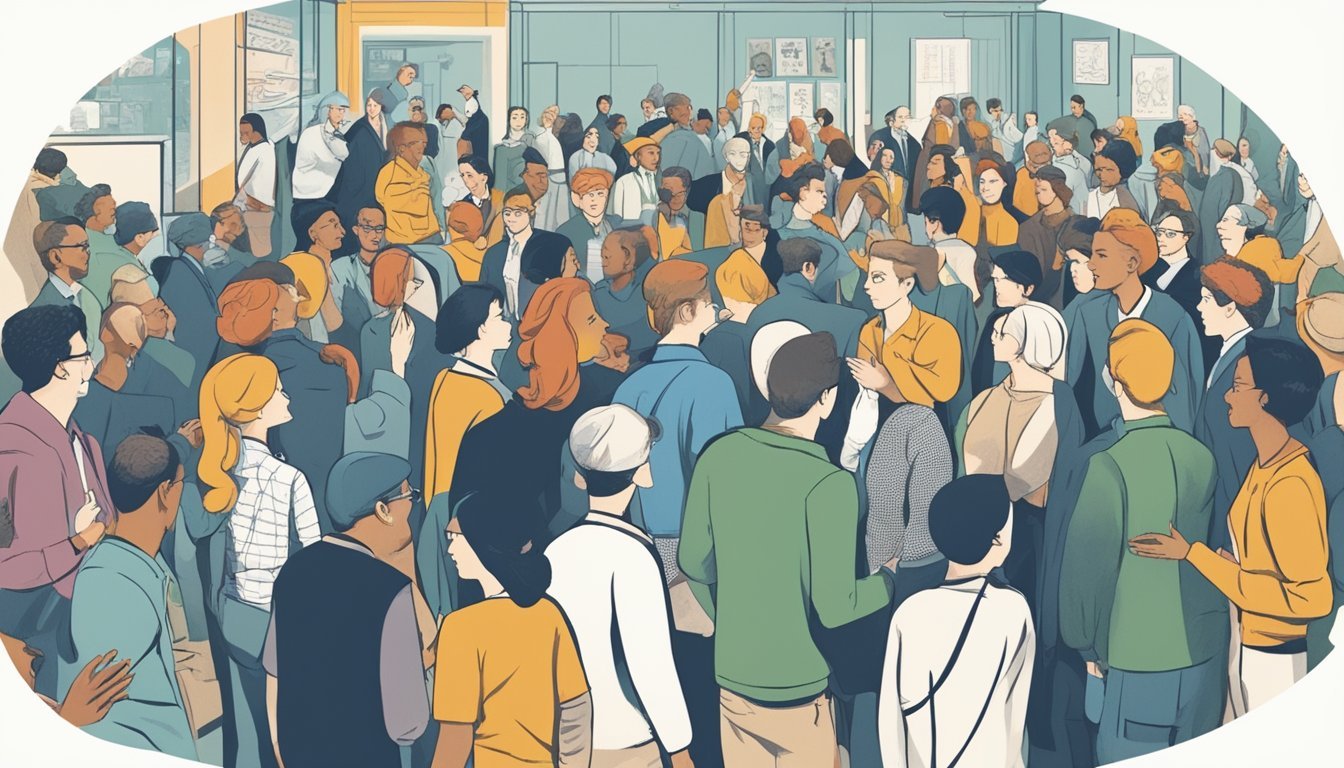Social Influence and Persuasion: How They Shape Our Choices Daily

Ever wonder how your opinions and decisions are shaped by others? Social influence and persuasion are powerful tools that impact your everyday life.
Whether it’s through an ad on social media or a friend’s advice, there are many ways you are influenced without even realizing it. 🧠

Persuasion is the act of changing someone’s beliefs, decisions, or actions through reasoning or requests. This can happen in many settings like political campaigns, mass media, or even casual conversations.
By recognizing these tactics, you can make more informed choices and resist manipulative messages.
Curious to learn some secret spiritual knowledge that can expand your mind? Check it out here 🌌.
Theories of Persuasion and Social Influence

Understanding how persuasion and social influence work can help you navigate daily interactions.
Different theories explain how people change beliefs, attitudes, and behaviors.
Cialdini’s Principles of Persuasion
Cialdini’s six principles explain how you might be influenced.
They are Reciprocity, Commitment, Social Proof, Authority, Liking, and Scarcity.
-
Reciprocity: You feel obliged to return favors. Example: accepting a free sample makes you likely to buy.
-
Commitment: Once you commit to something, you’re more likely to follow through. For instance, signing a petition might make you support the cause more strongly.
-
Social Proof: You look to others to decide how to act. Seeing positive reviews often makes you buy a product.
-
Authority: You follow experts or authority figures. A doctor’s advice usually carries more weight.
-
Liking: You are more likely to be influenced by people you like. Think of how friends and celebrities can sway your opinion.
-
Scarcity: You value things more if they seem scarce. Limited-time offers can make you act quickly.
Elaboration Likelihood Model (ELM)
The Elaboration Likelihood Model (ELM) explains how you process persuasive messages.
It features two routes: Central and Peripheral.
The Central Route involves deep thinking.
If a topic interests you, you’ll analyze and scrutinize the message closely.
The Peripheral Route is more about superficial cues.
You might not think deeply but can be swayed by flashy ads, attractive visuals, or the popularity of the source.
Both routes can change your attitude, but central route changes tend to be more lasting.
This model helps marketers and persuaders tailor their messages depending on their audience’s engagement level.
Social Cognitive Theory
Social Cognitive Theory (SCT), developed by Albert Bandura, emphasizes the role of observational learning.
You learn by watching others and imitating their behavior.
Key concepts include:
-
Modeling: Watching others perform behaviors and copying them. An example is children imitating parents.
-
Self-efficacy: Belief in your ability to succeed in specific situations. This belief affects your choices, effort, and persistence.
-
Outcome Expectations: Beliefs about the outcomes of behavior. If you think exercising leads to better health, you’re more likely to do it.
SCT explains why certain behaviors are adopted in society and how media can impact you.
Theory of Planned Behavior
The Theory of Planned Behavior (TPB) helps predict your actions based on three factors:
-
Attitudes: Your positive or negative feelings about a behavior. Strong beliefs can make you more inclined to act.
-
Subjective Norms: You consider others’ opinions about the behavior. Peer pressure or cultural norms can influence your decisions.
-
Perceived Behavioral Control: How much control you think you have over the behavior. If you believe you can do it, you’re more likely to try.
TPB is often used to design interventions and campaigns to change behaviors in areas like health, environment, and public policy.
Click here 🔗 to discover secret spiritual knowledge that could change your life! 🌟✨
Methods and Applications

Social influence and persuasion impact many areas of our daily lives.
This section covers how these methods are applied in various fields like advertising, politics, health, and conflict resolution.
Advertising and Marketing
Advertising and marketing 🛍️ use persuasion to influence buying decisions.
Techniques include emotional appeals, social proof (like testimonials), and scarcity (limited-time offers).
Ads often play on your emotions to create a need or desire for a product. Social media influencers also contribute, showcasing products and services, making them seem both popular and desirable.
Businesses analyze data 📊 to tailor their messages for specific audiences.
Effective ads are both persuasive and informative, ensuring that you find them not only convincing but also relatable.
Propaganda and Political Campaigns
In politics, persuasion is key 🗳️.
Leaders and parties use propaganda to shape public opinions.
This includes emotional appeals, simplifying complex issues, and even spreading misinformation at times.
Political ads and speeches are strategically crafted to resonate with voters.
Campaign managers target specific voter groups 👥 through data analysis and tailored messaging.
Understanding these techniques helps you recognize when political messages aim to manipulate rather than inform.
🔗Discover secret spiritual knowledge
Health Campaigns and Interventions
Health campaigns tackle issues like smoking 🚭, vaccinations, and healthy eating.
They use persuasive communication to promote healthy behaviors.
Often, these campaigns focus on providing clear, accessible information and showing the benefits of change.
Social proof, like testimonials from peers or celebrities, can boost effectiveness.
Public health initiatives may use fear appeals but balance them with positive reinforcement and practical advice.
This approach helps you to see the real-life benefits of making healthier choices.
Negotiation and Conflict Resolution
In negotiations 🕊️, persuasion is vital.
Effective persuaders understand the interests of others and use active listening and empathetic communication.
Building rapport and trust can lead to favorable outcomes for all parties involved.
Conflict resolution involves using persuasive techniques to bridge gaps between differing views.
The goal is to find a common ground or compromise that satisfies both sides.
These methods can help in various settings, from business negotiations to personal relationships.
Successful negotiation requires patience, clear communication, and the ability to see things from others’ perspectives.

